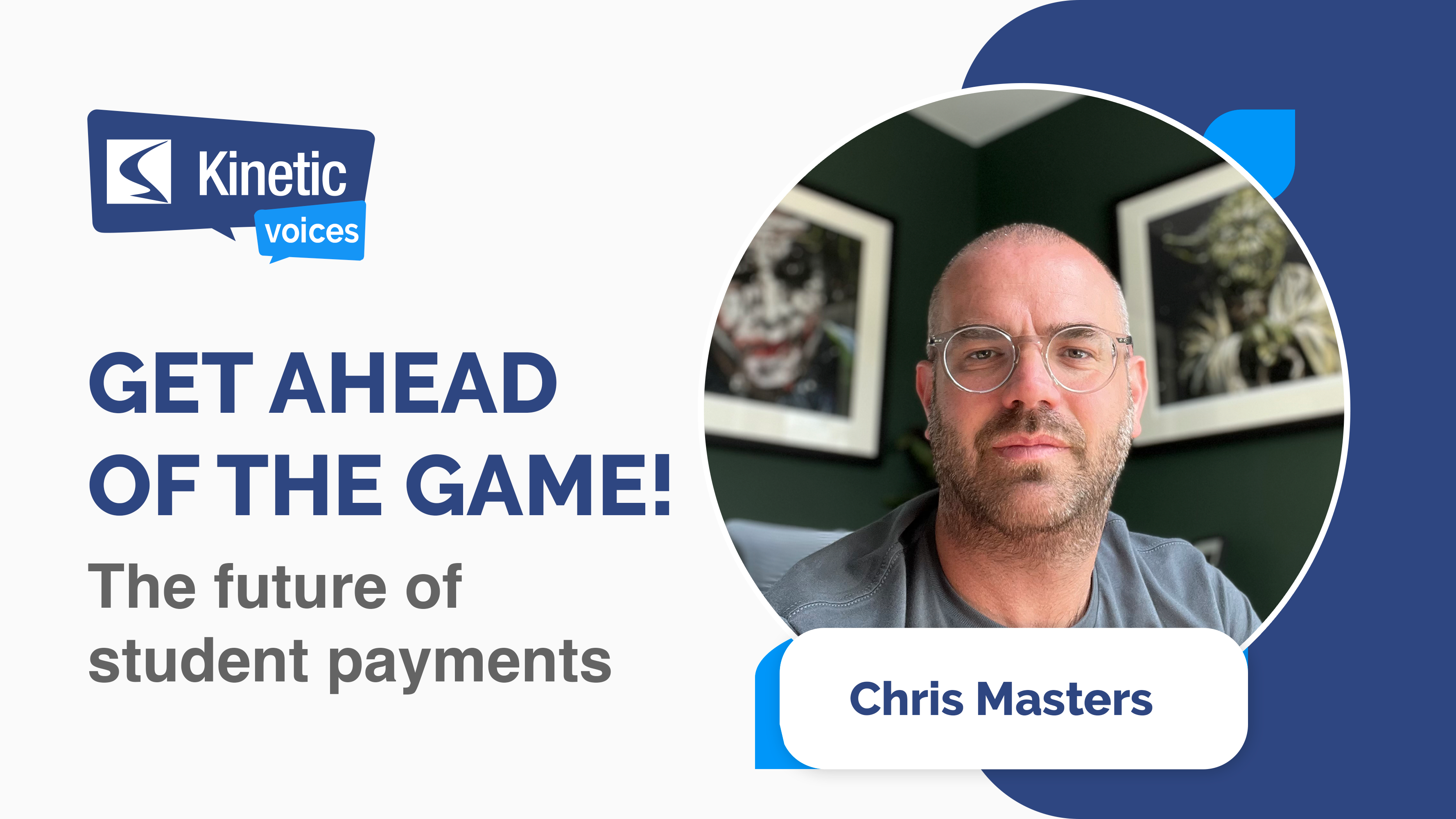Get ahead of the game – the future of student payments


From embracing contactless payments during the pandemic to online bank transfers, UK consumers are ahead of the game in the latest ways to buy goods and services.
The next step forward is open banking. We asked CHRIS MASTERS, (former) Director of Strategic Partnerships at Vyne, to lift the lid on the next big change in banking for universities and students…
With open banking reaching 7 million users in the UK at the start of 2023, the use of open banking is on the rise. ‘Pay with bank’ powered by open banking gives consumers more control over their money, while offering businesses and organisations a fast, efficient way to make and receive account-to-account (A2A) payments.
Through its new KxPayments platform, Kinetic brings various payment channels into its software to enable payments through easy, efficient and relevant payment methods, as well as supporting its customer base to save on their current card payment processing fees. One of these channels is open banking, so we caught up with Chris Masters at Vyne to find out more.
Chris explains: “Universities are working with young people who are proven to embrace technology quicker and want a faster and more efficient App-based banking journey and we partner with Kinetic to help them provide open banking to universities through the KxPayments platform. The Vyne integration allows universities to fully manage student payments with real time payment updates, instant pay-outs and refunds as well as effortless reconciliation.”
In a nutshell what is Open Banking, and how does Vyne support the HE sector?
“Open banking is based on open source technology that integrates directly with the biggest banks in the UK to enable account-to-account payments from customers' bank accounts, transforming the digital payments sphere.
“We’ve built bespoke open banking solutions to take and make payments to the next level. From desktop to mobile, QR codes to payment links and one-off payments to enhanced payouts.
“Payments are authenticated through the user’s own banking app and biometric scan, in place of entering card details and going through security questions. For businesses, the system is more cost-effective than card payments.”
The age group 16- to 24-year-olds is a key target market for universities. Can you tell us anything about the way that 16- to 24-year-olds are using open banking at the moment?
“We have found that lots of 16- to 24-year-olds have heard of open banking. In this age demographic, they are more open to new payment methods, but also much more trusting and positive about technology. The whole process of making the checkout experience easy and being able to make it simple to pay and manage their funds in a way that's quick and efficient is what people are crying out for. Younger generations are much more conscious about the environment. If we can leave less of a footprint by going cardless when we're making our payments, that's going to be great for every generation.”
"The whole process of making the checkout experience easy and being able to make it simple to pay and manage their funds in a way that's quick and efficient is what people are crying out for. Younger generations are much more conscious about the environment".
Chris Masters
What is the benefit to a university that really gets this right?
“Open banking can save universities card processing costs, which can be used to support students and improve processes, while students benefit from real-time payments and balance updates.”
As a recent case study, the University of Hertfordshire has seen 30% of eligible students choose to pay their deposits using this method in comparison to card transactions. This has put them on the right path to reduce card acquirer fees, and they hope to see savings grow as open banking continues to be a preferred payment method.
With an adoption rate of 20% in other industries, we are already seeing the demand in higher education. Through the open banking option, students, or their parent or guardian, can scan a QR code and be taken straight to their banking app to make payment, removing the need for card details and providing an innovative payment option.
Chris explains that a further benefit to the consumer is around refunds, which are simple and quick with open banking. “With traditional payments, refunds take up to seven days while we do it instantly. Some of the best feedback we've had is from customers who have used open banking for refunds. It’s allowed them to give money back to consumers to go and spend or re-order quickly.”


Chief Product Officer at Kinetic
Adam Calladine
“Open Banking facilitates instant payments, so that means when a customer authenticates that payment on their app, that money is in your bank account immediately. You can utilise your settlement account to collate the payments throughout the day and have a single transfer to instantly recognise the funds daily, providing instant payment and removing the days or weeks delay you may see with other payment methods.”
What sort of statistics are there behind the headlines?
“Research we conducted at Vyne with over 2,000 consumers shows that they are falling out of love with card payments.
- 63% of respondents have at least one frustration with online card payments.
- 26% say they have a perceived lack of security
- 24% have experienced frustrations with the length of time required to input card details”
So, how quickly is the move to open banking progressing?
“The predictions are that open banking payments will solidify as a dominant method by 2030. At the end of last year, there were 6 million users and already this year that's gone to 7.2 million in the space of a couple of months. It’s gathering more and more momentum and it's about universities and businesses trying to embrace that as early adopters, because it's not going to go away.”
Read more about student payment management here.
